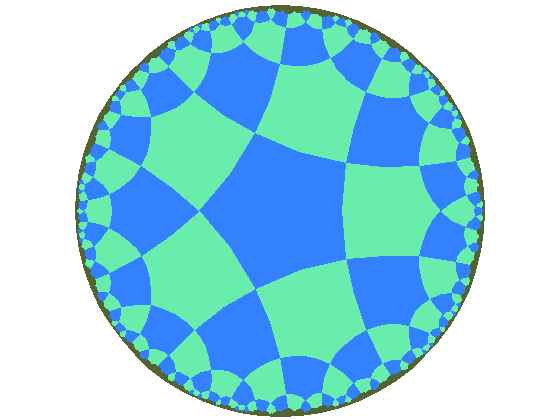
Today’s episode of Combinations and Permutations features Cody Palmer, Brandon Metz, and your intrepid host Samuel Hansen discussing the many faces, look a pun, of tesselations.
Topics Covered:
Escher Tesselations

Download the Episode
[wpaudio url=”https://www.acmescience.com/Podcasts/CP/cp58.mp3″]
Just stumbled across your amusing podcasts. (You can thank The Math Factor.) Most are good, but … well you said in this one you were tired and out of practice! A few of the more egregious errors:
1. Prototiles are not some strange type of tile. “Prototile” is just the fancy term to designate the set of shapes from which you construct the tiling. The prototile for the checkerboard is a square. The prototiles for the most famous Penrose tiling is a dart and a kite. You construct the tiling with congruent copies of the prototiles.
2. You are confusing “non-periodic” and “aperiodic”, which are not the same in tilings. Tilings can be non-periodic. TILES (or more properly, prototiles) can be aperiodic. It is no big deal at all that Penrose tilings are non-periodic. It is easy to make non-periodic tilings. Just take out your (infinite) set of dominoes and put them down, half vertically half horizontally, without gaps or overlaps. If you make it random, this tiling is non-periodic. Or do the same random stuff with squares and equilateral triangles (a formation of some importance to crystallographers). There are many more easy examples, some of them not random and quite fascinating. What is amazing is that there exists sets of prototiles that are aperiodic, that is, prototiles that cannot make a periodic tiling no matter how hard you try. Mathematicians at first doubted such tiles existed and Wang proved that if they do not, then there exists an algorithm for determining if any set of prototiles can make a tiling or not. Existence of aperiodic tiles showed that no solution to this basic tiling problem exists.
3. Any triangle can tile the plane, even scalene, in multiple different ways. The easiest way is to take two tiles and make a parallelogram out of them. In fact, any quadrilateral, even non-convex, can tile the plane! (I am, of course, talking about monohedral tilings — tilings made from a single prototile.)
4. When you said pentagons cannot tile the plane, you meant of course regular pentagons. One of the great open questions in tiling theory is how many different types of pentagons are there that can tile the plane? We know how many types of n-gons exist that can tile the plane for all n-gons except when n=5. Back in the 70s, when mathematicians thought the question was solved, Marjorie Rice, a San Diego homemaker with only a high school math background, found several new types of pentagons that could tile. There have been new advances in this area in recent years.
5. While not an error, I thought I’d mention that orbifold notation (developed by John Conway) is pretty amazing and not as hard as it looks. The most beautiful math book I’ve ever seen in my life is “The Symmetry of Things” by Conway and Goodman-Strauss (of Math Factor fame). The first few chapters are an easy introduction to orbifold notation, which connects tilings to topological surfaces by noting the symmetries. It is vastly superior to the more common crystallographer notation usually used for the wallpaper group.
I knew going in to this one that I was a bit out of my depth and that I was going to make mistakes. If you go through our others I guarantee that you will be able to find more mistakes as well. Thanks for writing in and correcting us though, glad someone actaully knows what we were supposed to be talking about.
I haven’t heard many mistakes in the other podcasts, but perhaps that’s just because I know more about tilings than some of the other topics (PhD topic). In any case, all the podcasts are a lot of fun.
I’ve been listening to your Math Maths podcast recently and Peter mentioned in the one I listened to today that it had been recommended in the UK that elementary children learn more about tilings because it is an area where they can quickly and easily get into unsolved problems, which can be very exciting for the kids. This is true. Children need exciting opportunities to set aside their long division exercises now and then and do “math being done by real mathematicians”. A secondary school class in Australia made one of the recent discoveries about pentagon tilings. Countries that score high on international math tests (Singapore, Japan, Canada, etc.) require 4th or 5th graders to study tilings. Our top-scoring state (Massachusetts) currently includes tilings in their curriculum, but the new national Common Core Standards will not include them, which is a shame. Tilings are visual and tactile and loaded with important geometry concepts for children (symmetry, transformations, polygon properties, angles, parallel line theorems, and so on).
Unfortunately, the visual nature of tilings makes it hard to do a good audio podcast. But I do hope you try again some day!